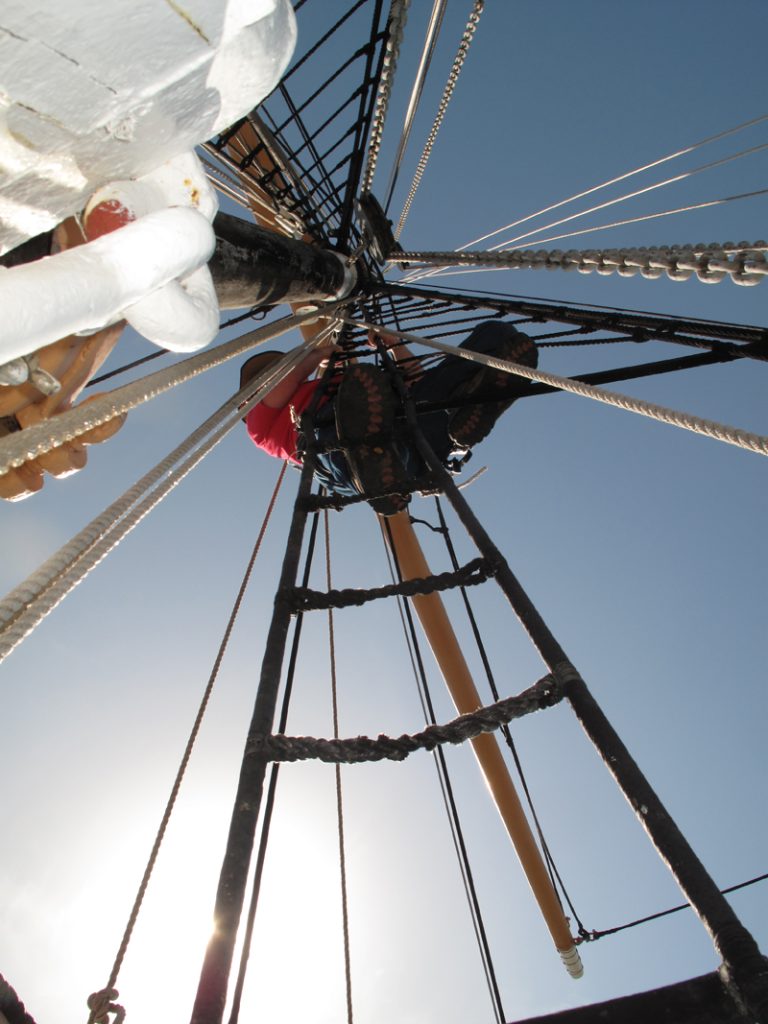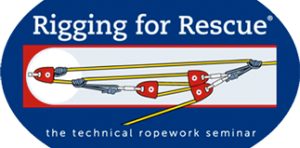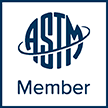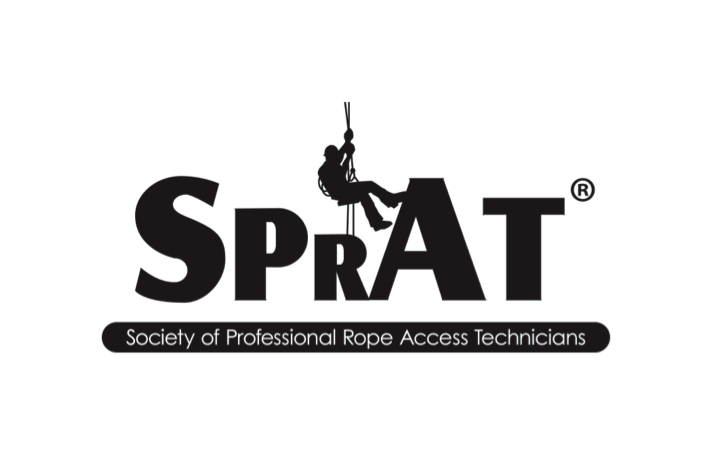Daisy Chains and Other Lanyards

Some Shocking Results when Shock Loaded Project Videos: View the Complete Report Abstract: Over the years, organized rope rescue has evolved with respect to the techniques used as well as the equipment employed. Much of this evolution can be attributed to the borrowing of techniques, equipment and practices from similar disciplines. For example, many pieces of equipment originally designed for climbing or mountaineering have been adopted by rope rescue practitioners and incorporated into their systems. The ‘daisy chain’ is one example of a piece of equipment originally popularized by aid climbers and later adopted for other uses. The daisy chain has largely become the lanyard-of-choice for climbers as a means of attaching themselves to an anchor point. Because the rope rescue community has such a strong contingency of climbers in its ranks, it is not surprising that the daisy chain is regularly used as a similar tool in rope rescue scenarios. In two independent drop test series conducted in 2002 and 2005, we examined the effects of a shock load on to various commercially made and user-configured lanyards. This presentation offers a critical examination of daisy chains and other similar lanyards.\
Two-Tensioned Rope Lowers

Centrally Focused Bridle Attachments Project Videos: View the Complete Report Abstract: Many rescue teams operate their rope rescue stretcher operations with either: a single tensioned mainline coupled with a separately managed belay line or two tensioned mainlines without a separate belay line – often referred to as ‘Two-Tensioned Rope Lowers’. Two-Tensioned Rope Lower configurations generally include two separate lines attached to the rescue package (patient, attendant(s), and stretcher), each supporting approximately half of the total mass. These configurations are rigged with a variety of stretcher bridle attachments, friction devices to manage the descent, attendant and patient tie-in methods, as well as rope types. In 2003, we conducted a series of drop tests that focused on certain stretcher bridle attachment methods in a selection of Two-Tensioned Rope Lower configurations. The 2003 drop test series looked exclusively at stretcher bridle configurations that included two separate bridles and respective mainline attachments. The findings of that drop test series were presented at the ITRS 2003 in Salt Lake City.
Rigging for Sherpas

Project Photos: Abstract: In January, 2009, in conjunction with the Himalayan Rescue Association, we had the honor and privilege to be able to offer a technical rope rescue training workshop for the Sherpa climbing guides that work and respond in the Mt. Everest region of Nepal. Rigging for Rescue donated the services of one of our instructors for the training. It was a unique and gratifying opportunity to be able to work and train with the Sherpa guides and offer rigging solutions to some of their patient transport challenges.
Rigging for Tall Ships

Project Photos: Abstract: Recently, a volunteer with the San Diego Maritime Museum contacted us with some questions relating to our previous research on lanyards. They had been exploring a new work positioning lanyard system and came across our ITRS paper from 2006 that addressed Purcell Prusiks as lanyards. The work environment the volunteer was addressing was for climbing the high rigging on Tall Ships. The San Diego Maritime Museum is home to the Star of India, which is the world’s oldest active Tall Ship. The sailors that climb the high rigging do so without any protection until they get to a position where the work is to be conducted (e.g. furling a sail, painting, repairing, etc.) – at that point they secure themselves with a work positioning lanyard. Following the phone consultation we provided regarding Purcell Prusiks as work positioning lanyards, an offer was made “if you are ever in San Diego…” Well, it turns out we were already going to be in the area and a private tour of the Star of India was too good to pass up. The captain generously signed off on a climb of the high rigging – what a thrill.
Helicopter Rappel

Equipment Testing and Evaluation Project Photos: Abstract: In October, 2010, Rigging for Rescue, LLC, in conjunction with Yosemite National Park Service all-hazard personnel, conducted three days of drop testing and systems analysis on helicopter rappel equipment and scenarios. The testing was completed at the Yosemite National Park Crane Flat Helibase utilizing the Helibase rappel tower. The drop testing incorporated the use of live rappellers (in a belayed capacity) as well as an articulating mannequin combined with steel weights (aka Rescue Randy). The accompanying report summarizes the tests and our observations.
Rigging for the Black

Project Photos From time to time some of the RfR principals and other rope rescue enthusiasts get together for a bigger training project. This typically involves a long highline or a larger multi-pitch objective down a sizeable piece of terrain. In May, 2002, we embarked on such a project with a Kootenay Highline System and Norwegian Reeve in the Black Canyon of the Gunnison National Park. The highline spanned from South Chasm View to North Chasm View. The total length of the span was 430 metres. We completed a full Norwegian Reeve down to the canyon bottom – the depth of the reeve was 550 metres. On the final iteration, the attendant made it round-trip from the end station to the canyon bottom and back in 67 minutes – quite a ride. This particular highline project involved all kinds of rigging challenges, equipment organization, logistical considerations and contingency plans. It was a superb training event.[/fusion_text][/one_full]
Two-Tensioned Rope Lowers II

Project Video View the Complete Report The BCCTR Belay Competence Drop Test Method of a 1m drop on 3m of rope with a 200kg test mass. This drop simulated a failure of one of the two lines in a Two Tensioned Rope Lower system. The DCD was a Figure 8 plate and a mechanical hand was used on the running end of that DCD. The mechanical hand was pre-set with 425N of gripping ability – the maximum observed grip of a rescuer with a gloved hand as per the Gripping Ability on Rope in Motion Study. Stretcher Bridle Attachment Considerations Many rescue teams operate their rope rescue stretcher operations with either: a single tensioned mainline coupled with a separately managed belay line or two tensioned mainlines without a separate belay line – often referred to as ‘Two Tensioned Rope Lowers’. Two Tensioned Rope Lower configurations generally include two separate lines attached to the rescue package (patient, attendant(s), and stretcher), each supporting approximately half of the total mass. These configurations are rigged with a variety of stretcher bridle attachments, friction devices to manage the descent, attendant and patient tie-in methods, as well as rope types. The primary focus of this presentation is on the stretcher bridle attachment component. This presentation will share the results of some failure analysis testing. The testing was conducted to examine the outcome to the rescue package using certain stretcher bridle attachment methods in a selection of Two Tensioned Rope Lower configurations. The material presented seeks to offer some direction in answering the question, “Would you want to take that ride?”
Research and Testing on Contract

Does your company have a new product it is developing? Does your organization have techniques and/or equipment that you would like to see critically examined? Rigging for Rescue has an on-site hydraulic ram slow pull machine and drop tower at our home base in Ouray, Colorado. Research and testing on contract can range from ‘quick look’ device or system evaluations to comprehensive examinations. Data is gathered using high-speed load cells. Previous testing on contract conducted by Rigging for Rescue has included complete research reports in addition to the raw data and video. The scope and scale of each project differs greatly. Please contact us by phone or email to begin an initial consultation on a potential testing project.
Grand Teton National Park

We recently returned from a Rigging for Rescue seminar on contract with the Jenny Lake climbing ranger cadre of Grand Teton National Park. It is always a privilege to train in beautiful settings such as the Tetons. Additionally, the Jenny Lake ranger cadre is a very experienced crew of practitioners that bring a lot of skills to the table. The discussions and exploration of topics/techniques is generally much richer in depth and breadth, given the vast amount of collective rescue experience in such a team as the Jenny Lake rangers. Each day we traveled by boat across Jenny Lake itself in order to access the granite crags in Cascade Canyon, near the base of Baxter Pinnacle. We covered a bit of refresher material, some new command & control ideas, pickoffs, litter work, and a big Guiding Line that traveled over the rugged talus field adjacent to the popular Practice Rocks cragging area. 2-attendant litter work above Jenny Lake The ever reliable 540 Rescue Belay device Pickoff stations near Hidden Falls Helmets and PFDs – safety first! The Tetons Vertical litter orientation for high angle
RfR Specialty Techniques – Ouray, Colorado

Our recent spring open enrollment offering of RfR Specialty Techniques included a diverse group of practitioners. We had folks from mountain rescue teams, special operations community members, and even a participant from the Danish navy. Topics and techniques explored included: a detailed discussion of artificial high directionals including the construction and use of a Sideways A-Frame bipod a mid-face litter pickoff the Kootenay Highline System in a spectacular location across the Ouray Ice Park gorge the San Juan Pickoff along with multi-pitch transitions and much more Kootenay Highline System Mid-face litter pickoff Station management at a hanging belay Multi-pitch transition using the San Juan Pickoff Sideways A-Frame The last exercise was particularly challenging as it included a hanging belay transition – similar to what you would find in a big wall setting. When you cannot unweight the system via a stance, all of the tension transfer tools in your toolbox need to be well applied and carefully considered. In a hanging belay, it is very “self critiquing” when you don’t get the steps just right.




